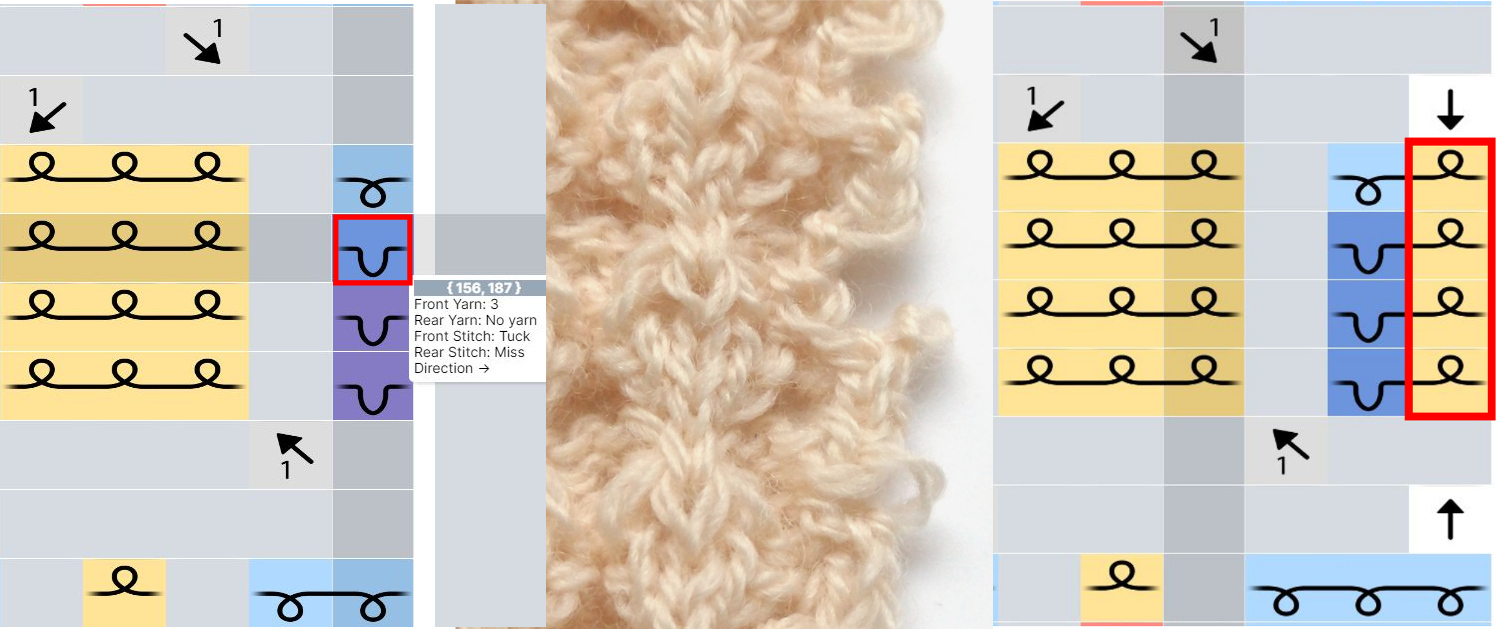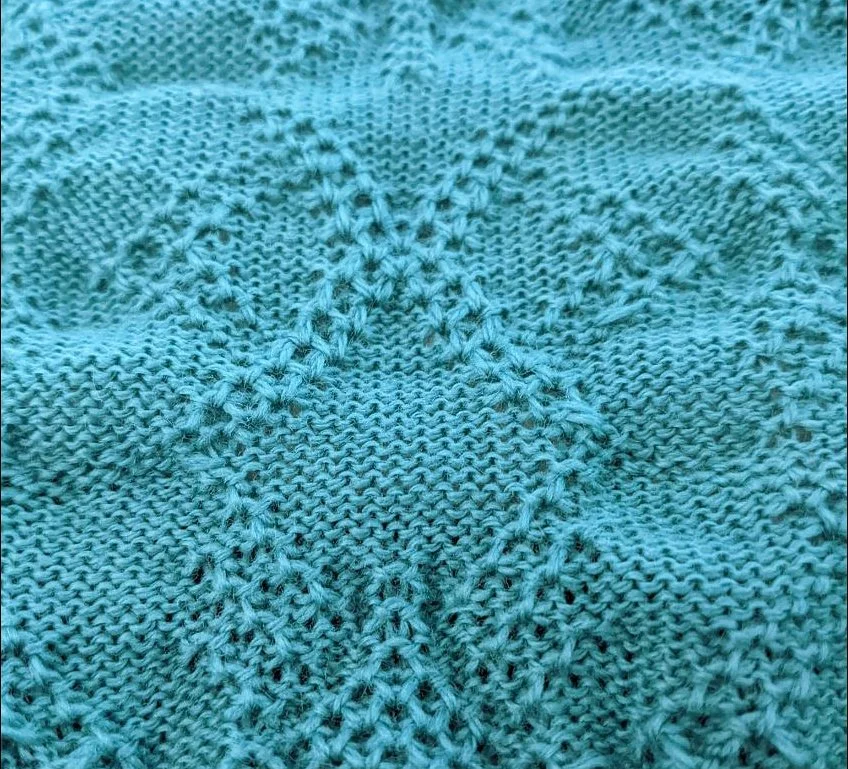A Good Tuck, Part 2
My previous post on tucks in machine knitting was certainly not the last word! In this post I focus on these two important points:
Placement matters when designing with tucks.
There’s an easy workaround for a jersey tuck pattern on the Kniterate.
Tuck stitches can be created on any type of machine — manual, punch card, and electronic machines. They are often used in combination with other techniques, such as slip stitches, cables, and colorwork, to create complex and intricate patterns. The swatch above, knitted on a Kniterate, combines colorwork and transfers. This Instagram post shows the swatch in progress. The third iteration of the stitch pattern at the top of this page includes fixes for roll distance (takedown), a fix for a bad edge, and an introduction of a second color.
Tuck Placement
Tucks as the last operation in a row are never a good idea. They’ll often become untucked when the next row is knitted. Or they’ll end up poorly formed with too much yarn (and not enough tension) creating an unintentional dropped stitch in a subsequent row.
The image below left shows the knitting sequence I used with tucks on the last needle. One of the bad tucks is highlighted. It produced the bad edge (below center) in this single color version of the stitch pattern. Though the pattern could have been fixed in a few other ways, my fix was to add another wale with protective knit stitches on the rear bed (below right).
Another fact to remember when placing tucks is that the size of the needle hook will only accommodate a limited number of stitches. It’s important not to design with too many tucks on a needle before knitting it off. (In fact, as this time the Kniterate design app will only allow up to 3 tucks on a needle before yielding an error. The tuck workaround for jersey might let you get beyond three tucks, but I wouldn’t attempt it unless my yarn was lighter weight than usual.
What about adjacent tucks? I’m still learning their secrets on the Kniterate! This is something I wouldn’t do with a jersey tuck workaround on a Kniterate. (See below.) I’ve worked with two adjacent jersey tucks on Passap, Silver Reed, Dubied, and Stoll without issue. I know that Brother/Taitexma machines usually fail at this. If I ever attempt adjacent tucks in a rib fabric on a Kniterate, I’ll report back.
What About Tucks in Jersey Fabrics on a Kniterate?
I was recently asked by @imaginary_knitworks how to translate a particular tuck pattern for the Kniterate. She had come across the pattern for manual machines. This particular stitch pattern has a tuck followed by 3 knitted stitches. The pattern is repeated for a total of three rows, followed by a row where all needles knit. The repeat of the tuck pattern is then offset by two needles for the next three rows, again followed by a row where all needles knit.
For a punch card machine a single iteration would look like the chart below left with the black dots representing punched holes and the needles that knit. When a Japanese-style punch card machine is set to tuck, the punched out holes (black circles) will knit and the unpunched spaces (white spaces) will tuck. The center image shows how the stitch pattern is translated for Kniterate. On the right is the technical face of the fabric @imaginary_knitworks knitted. (Fabric photo is used with permission.)
The Kniterate can handle much more complex jersey tuck patterns too. The stitch pattern below is a Designaknit jersey tuck pattern translated for the Kniterate by EcoKnitware using the workaround and knitted by @imaginary_knitworks. (Photo is used with permission.)
Finally it’s important to consider the type of yarn you are using when working with tuck stitches. Some yarns are better suited for tuck stitches than others, and the choice of yarn can have a big impact on the final result. For example, smooth yarns tend to work better for tuck stitches than textured yarns, as they are less likely to obscure the pattern. As always, it’s important to experiment with different yarn weights and fibers to see which ones produce the best results for your particular project.
O!
As a Kniterate ambassador I’d be happy to give you a virtual tour of the machine. If you’re a Kniterate owner, you may be interested in my prerecorded Designing with Kniterate classes.




